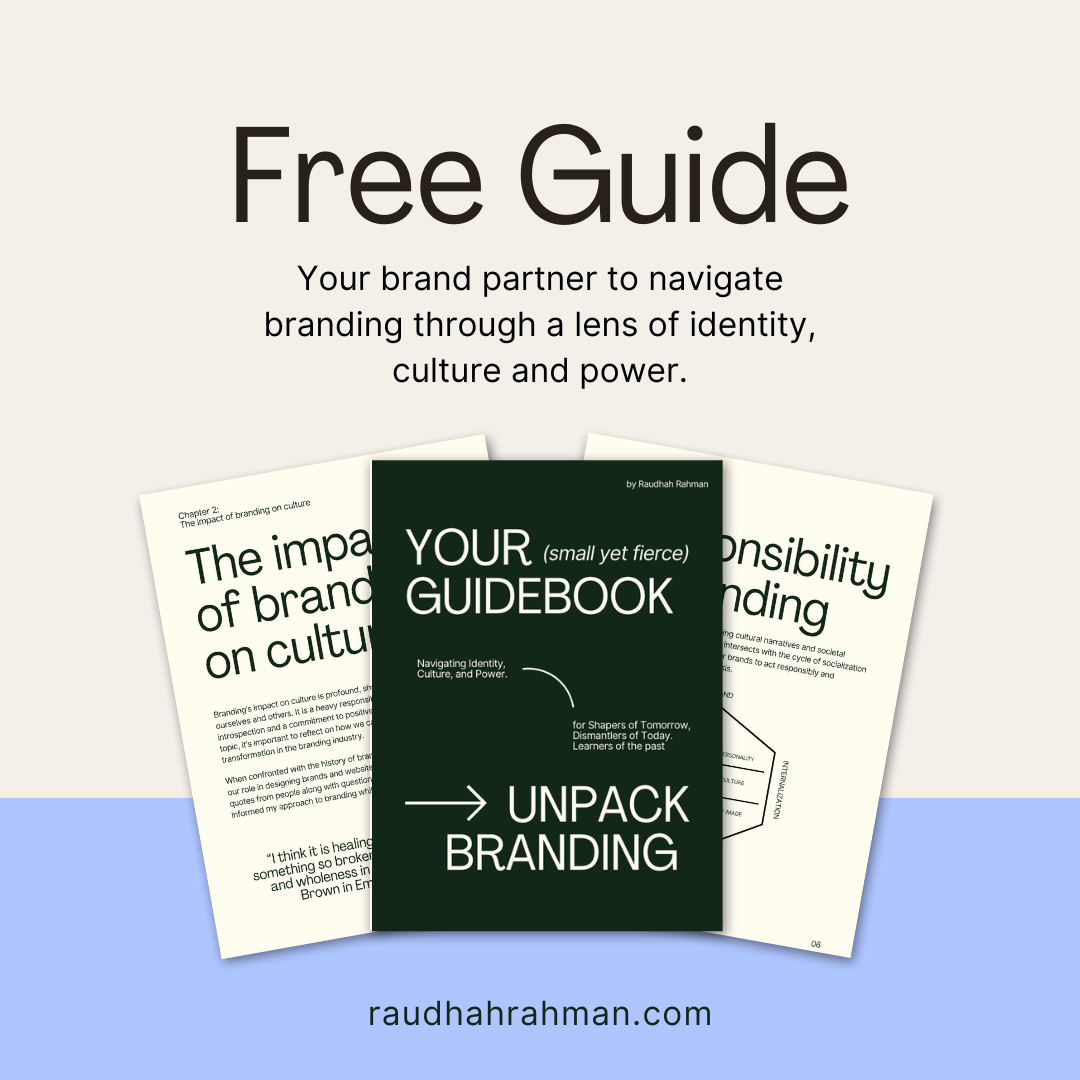What is Social Location?
and why is it important when it comes to “identity” in brand identity.
When I heard Bold Woman Brands name this in their 2 day conference, a lightbulb went on in my brain. It affirmed what I have been thinking about brand identity: a visual responsibility to not perpetuate the dominant narrative of traditional branding.
And to understand identity beyond the fonts and logos, we must learn about social location. The term social location came from the field of Sociology. As a visual learner, I found this wheel of power and privilege shared in Michelle Johnson’s Skill in Action workshops very helpful. This drawing is adapted from ccrweb.ca and created by Sylvia Duckworth.
I wrote this because I wanted to share why social location in important. It is also important to name that mapping yourself is not about how you view yourself. Rather, it is about how culture views us.
Why is social location important?
because it shows our points of privilege and oppression.
Identities that are closest to power have been normalized and tended to while identities in the margins (farthest away from power) have been uncared for and even exploited. And as our privileged identities learn about the experience of marginalized people, folks in the margins are experiencing the harm.
And before someone says “Raudhah, but we should not identify with how society perceives us”
Yes, these locations are constructs AND the harm is absolutely real.
Knowing that these social locations are constructs gives us an understanding that identities are fluid. One way I know this is because my social location is perceived differently in Malaysia where I lived, in Singapore where I was born and in United States where I live.
Now, let’s talk about the ‘Social’ part of the name.
Depending on where we are located on the identity, we have been socialized and conditioned in a different way than folks who are located in a different position than you on the spectrum. These identities can be both visible and non-visible and you’ll see that I give examples on how these identities relate to one another.
So I’d like to give you examples of both.
first, locating my non-visible identities:
for example, I am an immigrant
As you can see in the graphic above, there are many identities. Some visible and some non-visible. You can draw a sun like shape. The center of the sun represents power. Begin to mark to indicate where you are on this wheel for your non-visible identities.
Maybe you’ll notice some identities close to power and some in the middle and some distant from power.
Here’s what I wrote about my citizenship and class identities:
Socialized as a mixed class person in Malaysia and Singapore, I had resources to study Genetics in California which lead me to getting my work visa and then my permanent residency aka the green card.
I’m an immigrant with privilege and not a model immigrant. This is important to name because as I continue to learn about immigrants who are not been given the same chances I have, underestimated immigrants are experiencing displacement and forced into assimilation in a country that is far from home.
second, locating my visible identities
for example, I am able bodied
Visible identities are identities that folks assume as they come in contact with you face to face.
Here’s what I wrote about my able-body intersects with my immigrant identity:
Socialized as an able body person, I did well in school and was able to experience a post-secondary education the way it was delivered. Learning in a container that was catered to an able-bodied person made it possible for me to graduate top of my class and later on get a work visa.
Now, there are many more invisible and visible identities on this wheel.
So try this on: Map yourself on the wheel and
why is this important to know in branding?
It creates a “Unique Strategy Proposition” to enact change through the privilege that our brand has based on the identities the founder/co-founders hold.
And it does this because it invites us to question the biases and the dominant narratives that have been upheld by the industries that you are in. For example: visual dominance of flexible bodies on a google search which we hear “I can’t do yoga, I am not flexible”
So, does this mean you stop posting photos of yourself? No. The answer lies in identifying your privileged identities and where you have agency for change, and that is the kind of personal power I am interested in.
Personal Power that is rooted in collective liberation rather than individual privilege:
Personal power comes from disrupting what we feel guilty for. Guilt is an socialized emotion rooted in conditioning. And it prevents us from actually exploring how ignorance, avoidance and shame sits in our body.
so, when would you locate yourself?
when I am in shared spaces
because quite honestly, we cannot just say whatever the f we want – that’s not brave. That’s just vulnerability operating from ignorance and may cause gaslighting and bypassing experiences. If you know your social location, you may be able to practice discernment when to lean in and skillfully facilitate.
a tiny but mighty guide If this was helpful for you, I encourage you to begin to map your social locatioa tiny but mighty guide n and identify how those identities have affected how you are socialized. If an identity is normalized (closest to power) you may have a harder time admitting the privileges you have been given. If that happens, take a breath and began journaling about that experience. We have not been taught to question what comes easy to us and we need to start doing so.
This is a big topic I just shared and is best discussed in community, but I hope this article allows you to have some shared language and initial understanding on a brand that is rooted in equity. If you’re interested in navigating branding through the lens of identity, culture and power - I’ve put together a tiny but mighty guide to help you move through the branding journey a little more mindfully.


